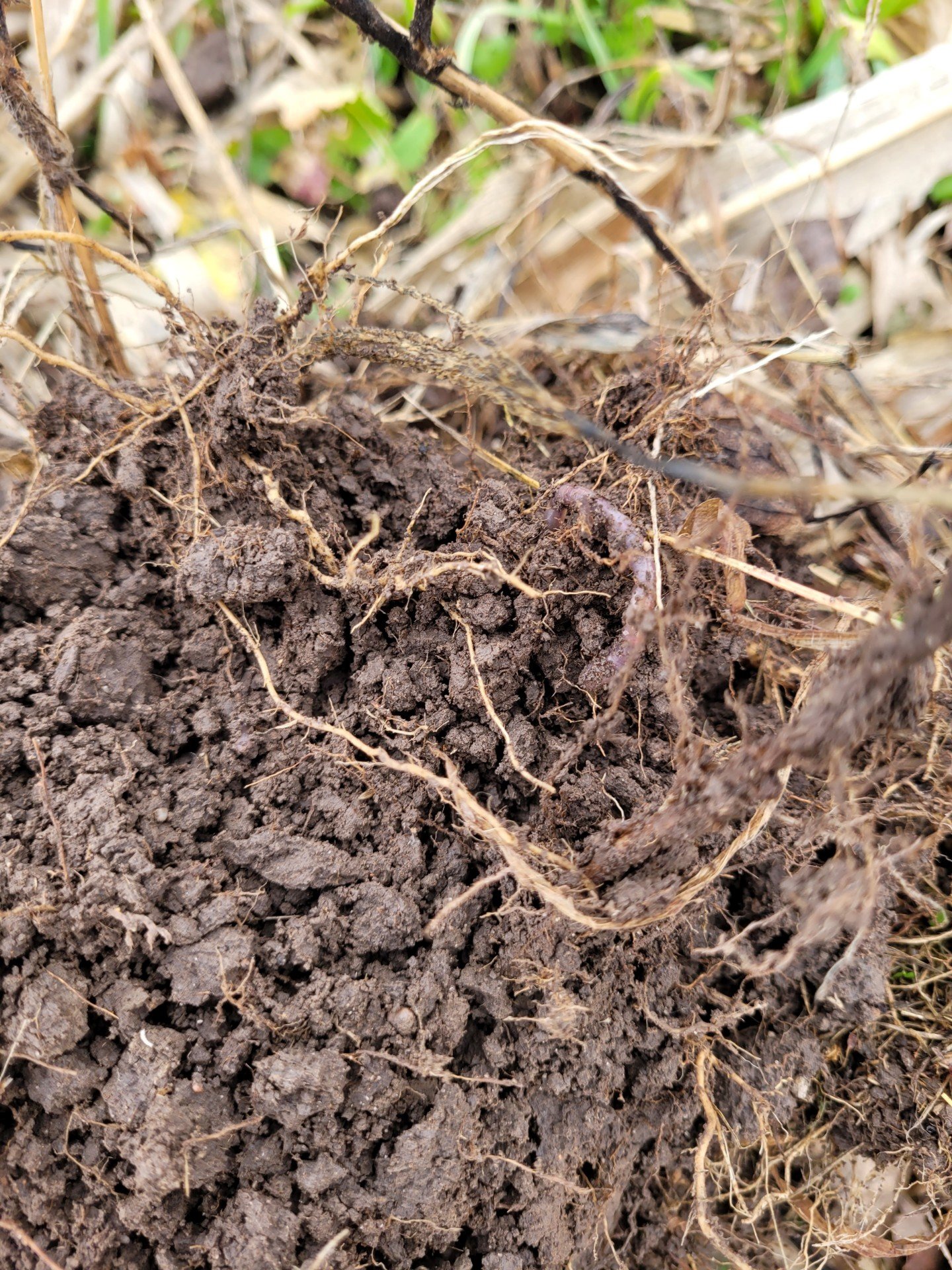by Dustin Johnson
Increasing organic carbon in the soil is a great goal. Simply put, more soil organic matter = more nutrient holding capacity, more water storage capacity, and more crop yield.
Measuring organic matter changes in the soil is probably the best way to measure the success of the entire system when management changes are made to increase soil organic matter. Measuring the contribution of a cover crop is hard to do in an accurate way because of how complex the carbon cycle is in the soil. Additions, losses, and long-term sequestration of carbon from crops, cover crops, and microbial life happen all the time and take multiple years to fully occur. Because plant sugars are water soluble, you would also need to have a very accurate model of mass flow from rainfall, transpiration, evaporation, and drainage. It’s a truly dynamic system that we don't know a lot about.
That being said, I think the best way to quickly increase free carbon in the soil is to grow plants that are known to have strong associations with mycorrhizal fungi. Plants that excel at encouraging fungi to help them grow, do so by providing a sugar reward at the root tip. This is the source of a lot of free carbon in the soil that is not part of a longer organic matter cycle. Grasses and some forbs associate more with fungi than legumes or brassicas do. Oats, ryegrasses, fescues, buckwheat, and sunflowers are at the top of my list of crop species known to have a high degree of fungal associations. I would look to these species first to accomplish your goal, but also keep in mind that diversity with legumes and brassicas is good for soil health in general.


